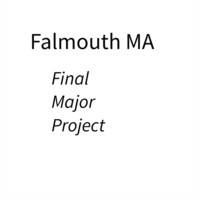When compiling my reflections of Week 7 I considered the following activities:
- Your Market – Activity
- Innovative Distribution – Challenge
- Maldon Promenade – Photo Shoot
- Webinar – Week 7 Paul Clements
I have clear view on the channels where I currently want to sell my photography which are the Photobook and fine art print market. As mentioned in my CRJ entry Your Market I have sometimes given work away without getting payment. Though I sometimes work with models on a Time for Prints basis which is a form of barter. Typically, that will be half a dozen edited digital images that have undergone very basic editing and the model has worked with me for typically 3 hours which based on their normal fees would equate to each digital image being worth about £20.
For my fine art work, I aspire to producing high quality prints using materials such as aluminium that immediately means I need to be selling individual images at more than £200 for ensure that I cover of printing. I don’t feel comfortable selling work at that price point to family members for ethical reasons that means I need to focus on working with a gallery, or marketing the work on line to drive any form of sales. To this end, I am in the process of refreshing my main website with the intent of introducing an online store for the sale of prints, books and zines. Each at different price points to attract different audiences. All will be limited editions making them a finite resource to help drive higher unit prices.
The innovative distribution challenge is a topic I have considered for some time especially when you look for ways to break into the photographic fine art market. Just doing what everyone else is doing is no longer sufficient to get yourself recognised. The costs for a gallery to exhibit at one of the major photo fairs is significant therefore they are only going to want to exhibit established photographers during those shows. It is always difficult to determine how much work really gets sold at these events. Though I view them as a PR event if you want to be considered as high end you need to be present at these events. If galleries can not afford to show emerging artists at these events but they are important from a profile perspective you better come up with alternative ways to promote your practice which has led me to consider different ways to create an intervention that do not result in me getting arrested. This thought process is the genesis behind the #wearmyart #buymyart concept where I walk around the show wearing my own artwork then recording it for distribution via social media.
The Maldon Promenade was an impromptu shoot so I only took my DSLR with a single lens in this case a 50mm prime. I have visited the promenade recently as the passage on Thistle ended at the quay which is at one end of the promenade. I gave me a change to rephotograph the boating lake which I had shared as part of the week 5 Activity on my photographic DNA. I tried to position the camera at the same location as the original image. Another challenge was the fact that due to poor note taking in those days I did not have any details on the lens or camera settings used to capture the image so I had to make a few educated guesses. Overall I think I got close and by shooting in landscape mode I could place the original inside the new image. The promenade has main benches for people to sit on and these all have plaques to remember people. These signifiers could act as a link from the pier work into images of other parts of the Essex coast.
The webinar in week 7 was my first chance to share photographic results of my promenade deck rubbings. I had shared some behind the scenes images from the shoot so both Paul and Philip knew about the work but not how I intended to combine the photographic and rubbing forms together into a final image. There was chance for me to share this work with Andrew who I had not meet prior to this week’s webinar. Overall the images met with positive feedback. I had grouped the images together with other images taken of the pier. The images under the pier showing the dark recesses of the pier was an image that Paul highlighted as interested as the reader might be interested to enquire more closely about the detail in the shadow space. This is something that is worth exploring further with a repeat trip to Walton Pier possibly at a different time when the tide is in. The other image that was viewed as successful was the close up of one of the pier leg showing the life forms that had decided to make the pier their home. The only image in the series that received negative feedback was the over the top plaque from a bench on Clacton Pier.
Overall this week’s webinar has given me confidence that directionally the work of the 4 Essex Piers achieves my intended objective to acts as a set of devices to contemplate life and the transition point from now into the future.



